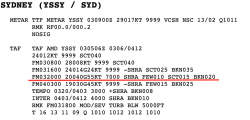jb747
Enthusiast
- Joined
- Mar 9, 2010
- Posts
- 13,486
A circuit is the pattern an aircraft flies around a runway. It consists of multiple legs. Upwind, crosswind, downwind, base and finals. Upwind and finals are in the same direction, but at different ends of the runway.Hi Pilots, in the following sentence, what does Left Base mean:
"An RPT, turboprop aircraft was on left base for RWY 34L at Sydney while independent visual approaches were in use."
Thanks
So, base is the leg, at 90º off the runway heading, that’s just prior to the final leg.
Circuits can be flown in a clockwise (right) or anticlockwise (left) direction. Local rules normally decide what will be used.

Circuits and Landings | Flight Training Made Simple
Learning to land is the most challenging part of your flight training. This circuits and landings briefing explains exactly what you can expect in circuits, approach and landing.
 www.ppl-flight-training.com
www.ppl-flight-training.com















